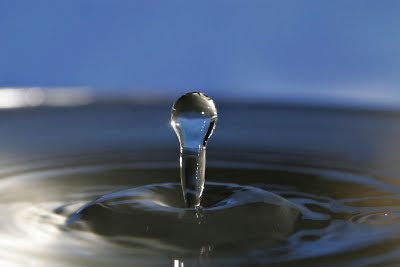
Water Droplet
| |||||
| |||||
| | |||||
This add was published by wateradvocates.org in the New York Times, today, November 10, 2009, I think the issue about the scarcity of water and even air is a priority for our planet, even though there are a lot of people that think that this earth's natural resources are there for us forever to exploit them; however that is just a wishful thinking. Yes it will be nice that we could continue processing and consuming our planet at the rate and at the scale that we are doing right now, but the reality indicates that we have to change our consumption behavior otherwise, citing Bill Joy, "our "future" will not need us" anymore. Therefore, here I have reproduced the add, almost in its entirety, there still very few but important things to do about our planet, the only planet that we know, until now, in the universe that can support life, and essence of all of it, by thinking in the importance of the quintessence of life, Water.

Those of us accustomed to getting safe water at the twist of a tap often don’t get what it’s like to live, and die, without it. We forget that safe drinking water and basic sanitation provide history’s brightest line between sickness and health. Water and sanitation-related diseases (those listed in the photo above and others) collectively account for 80% of sickness in developing countries. These diseases annually kill more children —2.2 million —than AIDS, malaria and TB combined. These diseases trigger 4 billion cases of diarrhea annually — and 2 billion infections by parasitic intestinal worms — stripping bodies of the capacity to absorb nutrients from food. As a result, half of the world’s malnutrition is caused by these water and sanitation—related diseases. The prescription for malnutrition is not just good food but safe water and sanitation. 11 these diseases are preventable now. Their prevention doesn’t inge upon new medical breakthroughs or vaccine discoveries.

To learn more about how you can help others get safe water, and for sources of cited statistics, please go to: www.wateradvocates.org or just click ►here◄



No comments:
Post a Comment